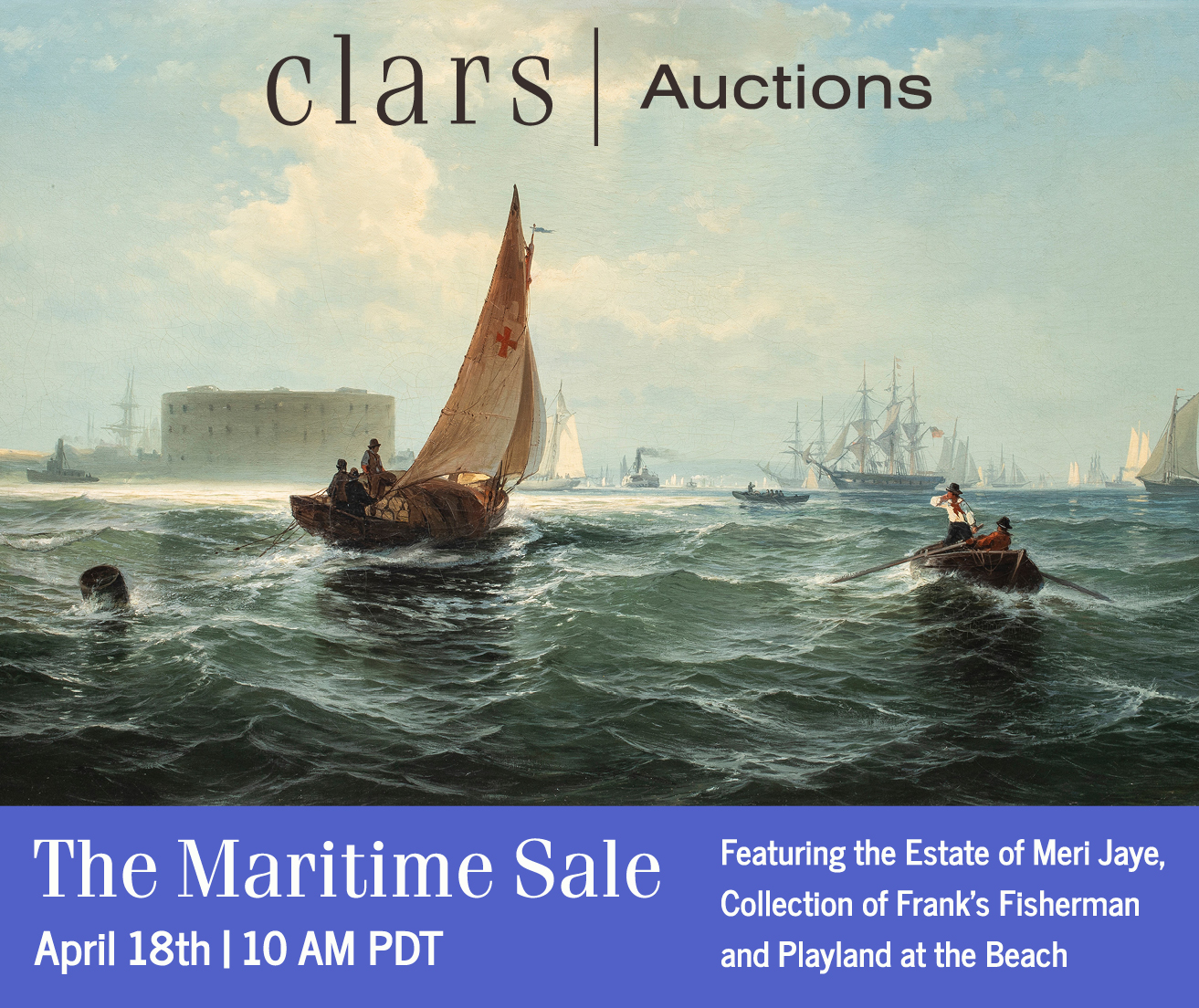Art of the Americas
February 22nd, 2013
|
John Molloy Gallery, New York City, was offering this 19th-century Northwest Coast drum for $1100. Molloy said, “Sales were spirited at a new, recent-level high.”
Heidi Becker of Eugene, Oregon, priced this 1920’s Plateau parfleche from her own collection at $950. “I used to use it to pack my clothes,” she said. Becker was “very happy with the show” and expressed a hope that “more dealers will come back next year. The crowd is really enthusiastic.”
This Plateau beaded cape with dentalium shells marked $4500 was sold early in the show. Alston Neal of Old Territorial Indian Arts, Scottsdale, Arizona, said the show was “as good as ever visually. There was a good turnout and new customers for us.”
At the Gallery of the American West, Sacramento, California, Bear Chase, a 15½" x 19½" oil on canvas, was priced at $3400. The gallery’s Mike Axton reported having an “excellent show. I sold a bunch of paintings.” |
San Rafael, California
Many of the 100-plus dealers in mostly American Indian art who set up at the 29th annual Marin Show: Art of the Americas on February 22-24 reported good sales and enjoyed a knowledgeable crowd of collectors. Kim Martindale, the show’s producer, said, “It seemed like a lot of the right people attended.” There was plenty of good-as-it-gets gorgeous American Indian material to look at, and, to quote a New England dealer, “jewelry was the star of the show.”
As happens at almost all American Indian art shows, most of the business is done dealer-to-dealer. “I just got that an hour ago,” a New Mexico dealer said while selling a turquoise and silver bracelet to another dealer.
What’s wrong with this picture? The transaction took place in a hotel room-cum-temporary art gallery two days before the Marin Indian show (as it is called by most) opened and not at the show itself. For the past few years, many dealers—including those with A-plus material and clients to match—have been setting up in their Embassy Suites hotel rooms (or just walking the halls) and buying and selling to and from each other. Most of this wheeling and dealing goes on in the hotel rooms before the show opens, then at setup, where non-exhibiting dealers pay $250 for “early buyer” badges, and finally at the Friday night preview. Come Saturday, when the show is open to the public, most out-of-town early buyers go home.
There were at least five fewer exhibitors than in past years. At the last minute, six exhibitors who had taken booths didn’t come because they were too sick to travel—flu season. But whatever the reasons, having fewer exhibitors means fewer booths, wider aisles, and less for the public to see. If this trend continues—or gets worse—Bay Area collectors and others who travel to this show every year will have less to look at, less to buy, less reason to attend.
As Deborah Begner of Turkey Mountain Trader in Scottsdale, Arizona, put it, “I would hate for this show to go away. It is the last of the dealers’ marketplaces—three days when we are all together. Everyone staying at the same hotel keeps the dealer community strong, and I’d miss that. We eat breakfast together. It’s the only place left where we have that. When the dealers just sell at the hotel and don’t set up and sell to the general public, stuff moves around, but the show loses some of its appeal.”
Does Martindale have strategies in mind to lure dealers back? “I’ve talked to some of our former exhibitors who are showing interest in coming back,” he told M.A.D. “They are hearing good stories from this year’s exhibitors, who are talking to their peers and who want them back. Some 2013 exhibitors say they had better sales in Marin than in the last four or five years, including at shows in the 1990’s.”
In early March, when M.A.D. asked Martindale about plans for a 2014 show, he was “still working out the details as to what makes the most sense. I’m pursuing many ideas.” He did say there will definitely be a Kim Martindale-produced show in the Bay Area next February. “I guarantee it one hundred percent.”
For more information, go to Martindale’s Web site (www.marinshow.com) or call (310) 822-9145.
|
|
|
|
|
|
|
|
Originally published in the May 2013 issue of Maine Antique Digest. © 2013 Maine Antique Digest


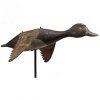






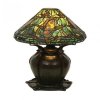

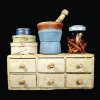
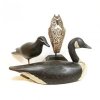



























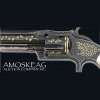



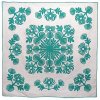
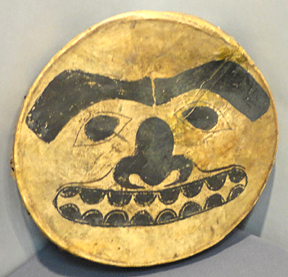
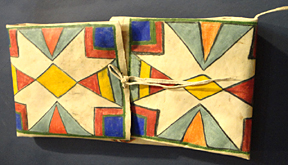
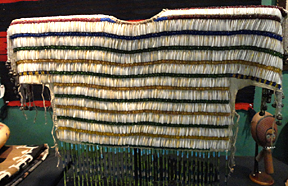
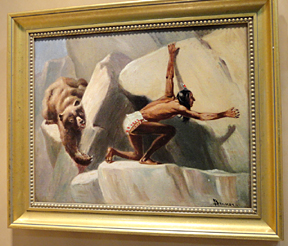
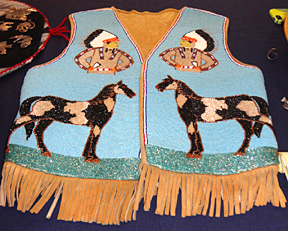 Barry Walsh of Buffalo Barry’s Indian Art, Holden, Massachusetts, was asking $3500 for this 1930’s Pueblo beaded vest made from brain-dyed smoked deer hide. Walsh said the show had been “really good. I sold thirteen kachina dolls—that’s a lot of kachina dolls—and one Plateau bag.”
Barry Walsh of Buffalo Barry’s Indian Art, Holden, Massachusetts, was asking $3500 for this 1930’s Pueblo beaded vest made from brain-dyed smoked deer hide. Walsh said the show had been “really good. I sold thirteen kachina dolls—that’s a lot of kachina dolls—and one Plateau bag.”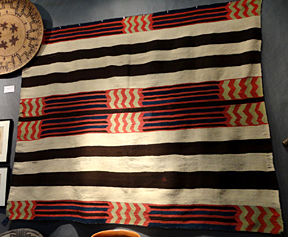 At the Bonhams booth, this chief’s blanket was on display. It is from the collection of Jim Phillips (1926-2012) and Lauris Phillips, his wife of 65 years. Bonhams will be auctioning the first half of the Phillips collection on June 3 in San Francisco. (The Phillipses were owners of Fairmont Trading Company in South Pasadena, California, and were well regarded in the field.) This blanket carries an estimate of $40,000/60,000. The blanket formerly belonged to Tony Berlant and to Maria Chabot. Bonhams’ specialist Jim Haas reported “extreme enthusiasm for the Phillips collection. Collectors are very much smitten. And even though we have nothing to sell—yet—we have had constant traffic in the booth.”
At the Bonhams booth, this chief’s blanket was on display. It is from the collection of Jim Phillips (1926-2012) and Lauris Phillips, his wife of 65 years. Bonhams will be auctioning the first half of the Phillips collection on June 3 in San Francisco. (The Phillipses were owners of Fairmont Trading Company in South Pasadena, California, and were well regarded in the field.) This blanket carries an estimate of $40,000/60,000. The blanket formerly belonged to Tony Berlant and to Maria Chabot. Bonhams’ specialist Jim Haas reported “extreme enthusiasm for the Phillips collection. Collectors are very much smitten. And even though we have nothing to sell—yet—we have had constant traffic in the booth.”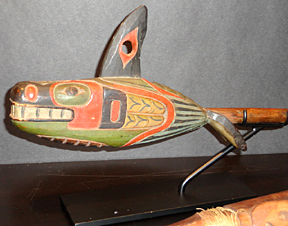 Taylor A. Dale of T.A.D. Tribal Art, Santa Fe, New Mexico, priced this late 19th-century Kwakiutl carving of a killer whale at $6500.
Taylor A. Dale of T.A.D. Tribal Art, Santa Fe, New Mexico, priced this late 19th-century Kwakiutl carving of a killer whale at $6500.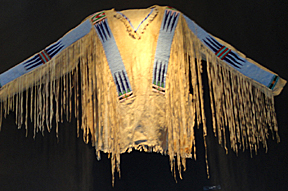 Mystic Warriors, Evergreen, Colorado, priced this Northern Plains shirt at $36,000. “Sales are good,” reported Ilene Johnson, “and good is the new excellent.”
Mystic Warriors, Evergreen, Colorado, priced this Northern Plains shirt at $36,000. “Sales are good,” reported Ilene Johnson, “and good is the new excellent.”
